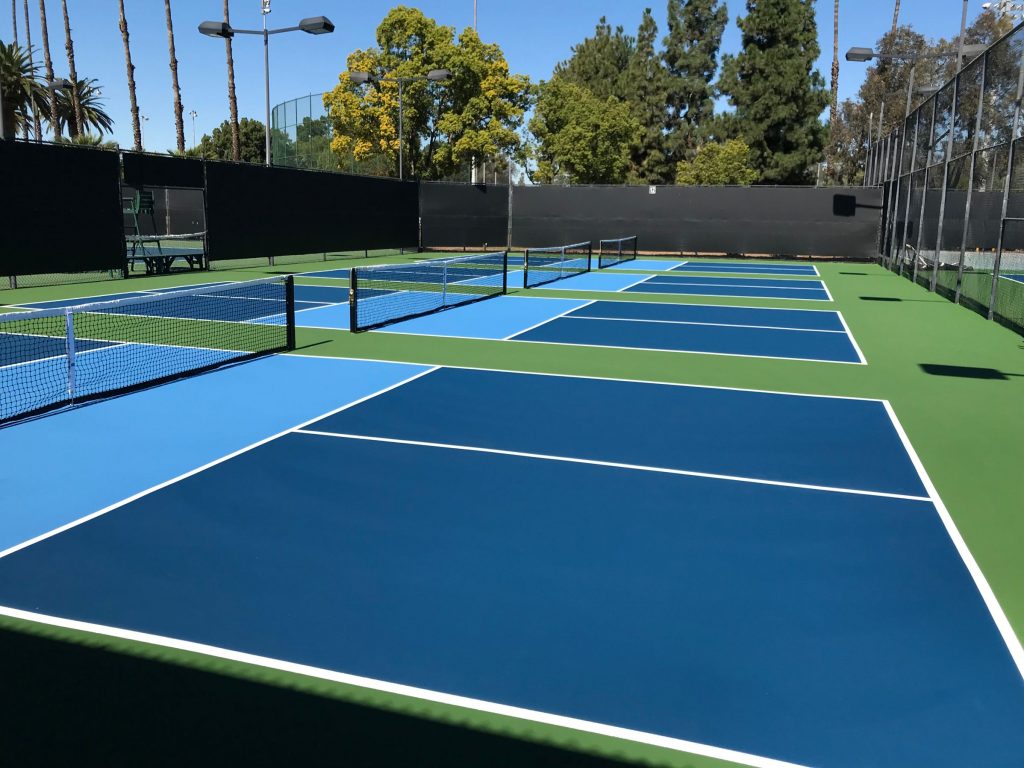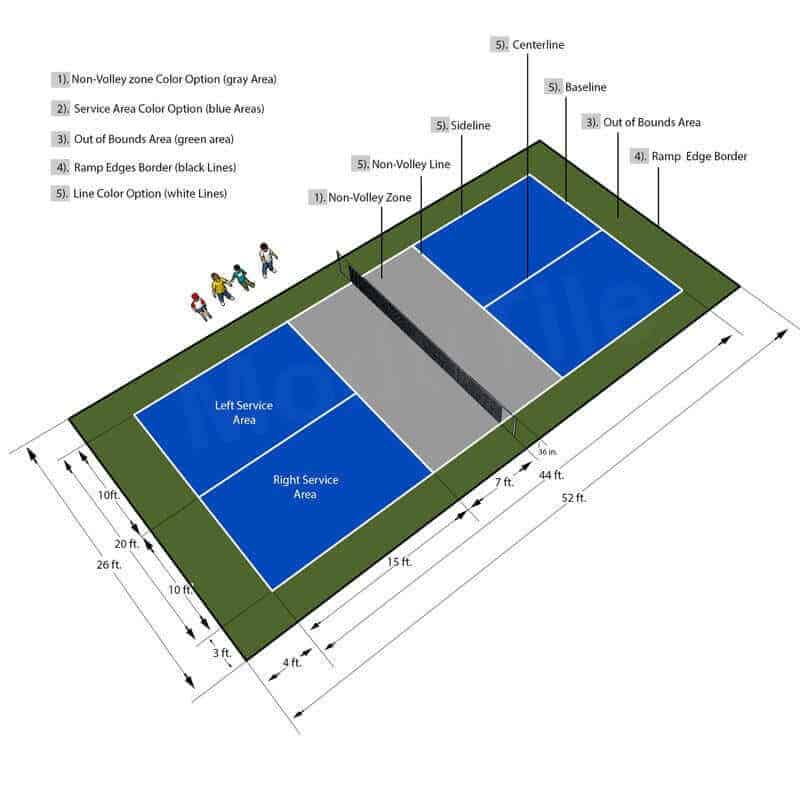Comprehending the Timeline for Your Pickleball Court Construction Job
Comprehending the Timeline for Your Pickleball Court Construction Job
Blog Article
Increase Resident Engagement With Community-Driven Pickleball Court Projects
The introduction of community-driven pickleball court tasks provides an unique possibility to foster neighborhood involvement and reinforce community connections. By actively entailing locals in the preparation and implementation phases, such campaigns not only produce recreational spaces yet also advertise a shared feeling of possession. Comprehending the steps to start these tasks, including reliable stakeholder engagement and resource appropriation, is important. The real concern continues to be: how can these grassroots initiatives be strategically carried out to ensure sustainability and inclusivity in diverse neighborhoods? Discovering successful instance researches may offer the understandings required to address this critical worry.
Value of Neighborhood Involvement
Area engagement is an important aspect in the effective advancement of pickleball court jobs, as it promotes a feeling of possession and collective obligation among citizens. When neighborhood participants are proactively included in the preparation and application stages, they are most likely to support for the project's long-term success. Engaging stakeholders such as neighborhood gamers, family members, and recreational groups makes sure that the facilities meet the varied demands and choices of the area.
Additionally, neighborhood interaction cultivates a supportive atmosphere where homeowners really feel empowered to contribute their resources and ideas. Pickleball court construction. This joint technique can result in innovative remedies that enhance the design and functionality of the courts, making them extra attractive to a wider target market. Additionally, including homeowners in decision-making processes can strengthen social connections, promoting inclusivity and unity within the community
The presence of neighborhood support for a pickleball task can likewise play a critical role in safeguarding funding and authorization from regional authorities. By showing a shared dedication to leisure growth, communities can properly advocate for sources and policy changes that favor the facility of pickleball courts, ultimately enhancing the neighborhood culture and leisure landscape.
Actions to Initiate a Job
Launching a pickleball court job calls for a methodical method that constructs on the foundation of neighborhood involvement established in previous conversations. The primary step is to assemble a job board consisting of neighborhood stakeholders, fanatics, and representatives from appropriate companies. This varied group makes sure that multiple point of views are taken into consideration.
Next, carry out a demands assessment within the area. Studies, emphasis teams, and public conferences can be effective in gauging passion and gathering input on potential court places, preferred services, and scheduling choices. Following this, create a task strategy outlining timelines, responsibilities, and objectives.
When the strategy is in area, involve with local authorities to understand zoning regulations and any required licenses. Connecting transparently with the area throughout this procedure is critical, as it cultivates trust fund and urges more engagement.
In addition, arranging neighborhood events can help preserve energy and excitement. These occasions can act as systems for further conversation and aid to reinforce area connections. Last but not least, paper every step taken and maintain in-depth documents, as this will be advantageous for future phases of the project, consisting of financing and source purchase.
Financing and Resources Available
Securing funding and sources for a pickleball court job is typically an essential action that can establish the task's expediency and success. Numerous methods exist for acquiring financial backing, ranging from public financing to exclusive sponsorships. Local federal government grants, usually focused on advertising area health and recreation, can give substantial sponsorship for such efforts.
Along with federal government resources, nonprofit companies pop over to these guys and foundations frequently use grants particularly for sports and neighborhood development tasks. Engaging regional businesses as sponsors can additionally be a productive strategy; numerous firms aspire to purchase area efforts that boost their corporate social obligation account.
Crowdfunding platforms have actually become More Bonuses a viable option for grassroots fundraising, allowing neighborhood members to contribute directly to the job. This technique not just elevates funds yet also promotes a sense of ownership among participants.
Style and Preparation Factors To Consider
Reliable layout and preparation are basic parts of any kind of effective pickleball court project adhering to the purchase of funding and resources. A thorough assessment of the recommended place is essential; this consists of assessing accessibility, proximity to existing area services, and the possibility for presence and involvement.
The format of the court have to abide by main size specs while thinking about the surrounding setting. Including functions such as seating, color structures, and proper lights can dramatically improve player experience and viewer enjoyment. Materials picked for the court surface should focus on toughness and safety and security, with alternatives like acrylic or asphalt offering ideal performance.
Entailing neighborhood members in the style procedure cultivates a feeling of ownership and makes certain that the facility meets local needs - Pickleball court construction. This can be attained through public consultations and studies, allowing stakeholders to express their choices and worries
Sustainability should also be a top priority; incorporating green products and practices can add to long-term stability. Producing an upkeep plan to make certain the court remains in exceptional problem will support ongoing area involvement and participation in pickleball activities.

Success Stories and Study
Highlighting the transformative influence of community-driven efforts, several success tales show how collaborative initiatives have caused the advancement of dynamic pickleball courts throughout numerous regions. One remarkable example is the initiative in a village in Florida, where homeowners united to transform an underutilized tennis court into a dedicated pickleball center. Through fundraising events and collaborations with local companies, the community increased sufficient funds to install new internet, resurfacing, and lines, ultimately promoting a dynamic hub for neighborhood gamers.
Likewise, in a suburb of The golden state, a grassroots movement emerged to develop pickleball courts in a neighborhood park. The job not just involved volunteers for building yet also included workshops to engage neighborhood participants in the sport. Because of this, the courts came to be a centerpiece for social interaction and fitness, drawing in players of all ages.
These study exemplify exactly how community-driven jobs can boost regional involvement, advertise exercise, and enhance social bonds. By leveraging cumulative sources and enthusiasm, neighborhoods can effectively develop and sustain pickleball facilities that offer diverse populations and promote a sense of belonging.

Conclusion
Finally, community-driven pickleball court tasks function as essential instruments for boosting regional involvement and promoting a feeling of belonging among homeowners. By prioritizing stakeholder participation throughout the planning and execution phases, these efforts can efficiently resolve diverse area needs. Additionally, leveraging readily available resources and here taking a look at successful situation researches can provide useful understandings for future tasks. Inevitably, such initiatives add to the improvement of public rooms right into dynamic facilities of physical fitness and social communication, reinforcing community ties.
The emergence of community-driven pickleball court jobs provides an one-of-a-kind possibility to cultivate local engagement and reinforce area ties.Neighborhood interaction is a crucial component in the effective growth of pickleball court projects, as it promotes a sense of possession and cumulative responsibility amongst homeowners. When community members are proactively involved in the planning and application phases, they are more likely to advocate for the task's lasting success.Launching a pickleball court job needs an organized approach that constructs on the structure of neighborhood interaction established in previous conversations. The project not only engaged volunteers for building and construction yet likewise included workshops to engage neighborhood members in the sport.
Report this page